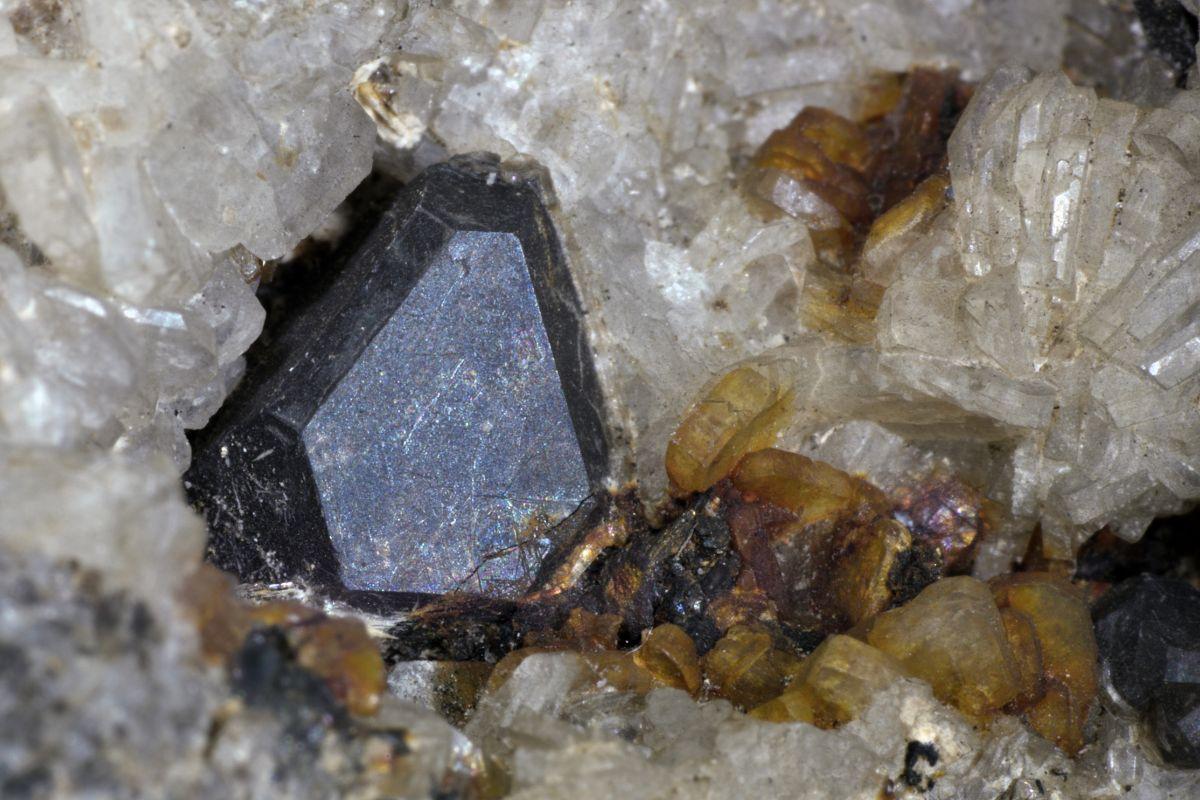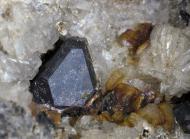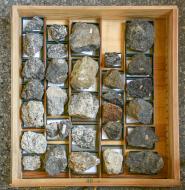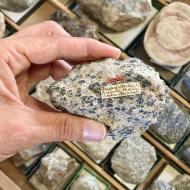The book ‘Vom Steinbruch ins Atelier’, published in July 2024 as part of the VDG Weimar's series ‘Laborberichte’, presents the results of an interdisciplinary collaboration using the example of Karl Wilhelm Nose's rock collection at the Museum für Naturkunde Berlin. The cooperation project between the museum and the Temporary Object Lab, the Cluster of Excellence Bild Wissen Gestaltung and the Hermann von Helmholtz-Zentrum für Kulturtechnik at Humboldt-Universität zuBerlin aims to facilitate interdisciplinary and participatory scientific approaches and develop open access and information structures as part of the museum's plan for the future.
The research collection of the Museum für Naturkunde Berlin will be further developed into an open information structure as part of the Future Plan, which already enables interdisciplinary and participatory scientific formats now and in the future. This interdisciplinary approach was tested as part of a cooperation project between the Museum für Naturkunde Berlin, the Temporary Object Lab, the Cluster of Excellence Bild Wissen Gestaltung and the Hermann von Helmholtz-Zentrum für Kulturtechnik at Humboldt-Universität zu Berlin. The focus was on the Bonn doctor and natural scientist Karl Wilhelm Nose (1753 - 1835), who donated an extensive collection of volcanic rocks from the Eifel and Siebengebirge regions to Berlin University in 1814. Even today, 1105 of these samples are still in the collection of the Museum für Naturkunde Berlin as the successor institution.
The Nose Collection was analysed by the mineralogist and scientific head of the Mineralogical Collection, Ralf Thomas Schmitt, the historian Angela Strauß and the artist Oliver Thie - building on their respective scientific backgrounds - in an interdisciplinary manner. As a result, the collaborative research provided many new discoveries about the objects in the Nose collection, which significantly expanded the perspective and knowledge of the individual scientific disciplines on these objects. The book ‘Vom Steinbruch ins Atelier`, which was published in July 2024 as part of the VDG Weimar's series Laborberichte, summarises the results of this interdisciplinary case study.
In the article ‘Die Mineralogische Sammlung des Museums für Naturkunde Berlin im Wandel der Zeit, the author Ralf Thomas Schmitt discusses the basic concepts of geoscientific collection objects, the history and structure of the Mineralogical Collection, collection expansions and additions, collection documentation and cataloguing plus the relevance of the collection. Particular attention has been given to Karl Wilhelm Nose's collection objects and their current significance. ‘In our collection, we keep the original samples on which the mineral types sanidin and nosean were described,’ says Schmitt. ‘Nose was involved in the discovery and first description of both minerals. sanidine is a frequently occurring potassium feldspar, while nosean is a rare sodium aluminium silicate.’
Angela Strauß presents the relevance of the Nose collection in her article ‘Vom Siebengebirge an die Spree – Die Musealisierung einer mineralogischen Privatsammlung’. She describes the provenance history of the collection and provides information on the biography of the bourgeois collector Karl Wilhelm Nose. He endeavoured to create a logic of nature. In the process, he assembled collections and gave them away. His work earned him the praise of one of his most prominent contemporaries: Johann Wolfgang von Goethe.
Felix Sattler from the Hermann von Helmholtz Centre for Cultural Technology analyses Oliver Thie's artistic research from an art-historical perspective in his article ‘Naturtreue, Formprinzip und Charakterstudie - Gesteine und Mineralien in künstlerischer Forschung und Praxis’. He scrutinises the interaction between rocks and minerals and art. Based on naturalistic drawing studies, broad-based artistic research into these objects has developed, leading to corresponding and complementary findings and perceptions that are sometimes challenging for science.



